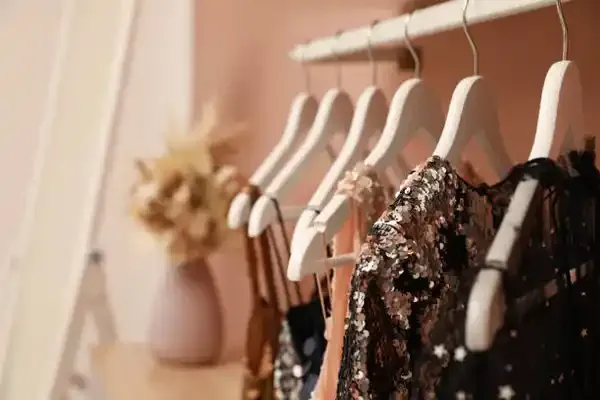Introduction
Fashion dress has long been a reflection of society, culture, and individual expression. From ancient civilizations to modern runways, the evolution of fashion trends has captivated people worldwide. Understanding the history, impact, and key elements of fashionable dress provides insights into the dynamic nature of the fashion industry. This article delves into the rich tapestry of fashion dress, exploring its historical roots, societal influences, and future trends that continue to shape the way we dress and perceive style.
History of Fashion Dress
Fashion has been around since humans first started wearing clothes, but the concept of "fashion dress" really took off in ancient civilizations like Egypt and Mesopotamia. People used clothing not just for protection but also as a form of self-expression and status.
Throughout history, there have been iconic figures who have influenced fashion trends. From Cleopatra's mesmerizing gowns to Marie Antoinette's extravagant styles, these historical fashion icons have left their mark on the way we dress even today.
Evolution of Fashion Trends
i. Decade-by-Decade Fashion Evolution
Fashion trends have been constantly evolving, reflecting the social, political, and cultural changes of each era. From the flapper dresses of the 1920s to the neon colors of the 1980s, each decade has had its unique style.
ii. Impact of Technology on Fashion Innovation
Technology has revolutionized the fashion industry, from the invention of the sewing machine to the rise of online shopping. With the help of technology, designers can now create innovative fabrics, 3D-printed accessories, and even virtual fashion shows.
Impact of Fashion Dress on Society
i. Social and Cultural Symbolism of Dress
Clothing has always been a powerful form of communication, reflecting societal norms, values, and cultural traditions. What we wear can convey messages about our identity, beliefs, and even our social status.
ii. Body Image and Self-Expression Through Fashion
Fashion can play a significant role in shaping our body image and self-esteem. Finding clothes that make us feel confident and comfortable allows us to express our personality and individuality through what we wear.
Key Elements of a Fashionable Dress
i. Color, Fabric, and Silhouette Choices
The key elements of a fashionable dress include carefully selecting colors that complement your skin tone, choosing high-quality fabrics that feel luxurious, and picking silhouettes that flatter your body shape.
ii. Accessories and Styling Techniques
Accessories can elevate a simple outfit to a stylish ensemble. Whether it's a statement necklace, a bold handbag, or a pair of trendy shoes, how you accessorize can greatly impact your overall look. Similarly, mastering styling techniques like layering and mixing textures can take your fashion game to the next level.
Sustainable Practices in Fashion Design
i. Importance of Eco-Friendly Materials
Gone are the days of fashion being synonymous with environmental harm. Today, designers are embracing eco-friendly materials like organic cotton, recycled polyester, and innovative plant-based fabrics. Dressing to impress? How about dressing to save the planet too?
ii. Fair Trade and Ethical Production Methods
In the world of fashion, it's not just about how good you look but also about the story behind your clothes. Fairtrade practices ensure that the hands creating your favorite dress are treated fairly and with respect. Who knew looking fabulous could feel this good?
Influence of Celebrity Fashion on Dress Trends
i. Celebrity Fashion Icons and Their Impact
Celebrities wield immense power in shaping fashion trends from the Met Gala to street style snaps. Whether it's Rihanna turning heads in a daring outfit or Harry Styles breaking gender norms, these icons set the stage for what's hot in the world of dress.
ii. Red Carpet Moments that Define Fashion Trends
Remember that iconic dress that broke the internet? Celebrities bring their A-game to red-carpet events, showcasing the latest trends and pushing fashion boundaries. These red carpet moments are not just about style; they're about making a statement.
Cultural Significance of Traditional Dress
i. Exploring Traditional Attire Around the World
Traditional dress is more than just fabric and thread—it's a celebration of culture, history, and identity. From India's vibrant saris to Japan's elegant kimonos, traditional attire tells a story that transcends borders.
ii. Reviving Heritage Styles in Modern Fashion
In a world of fast fashion and fleeting trends, reviving heritage styles is a nod to the past and a step towards sustainable fashion. Designers are blending traditional craftsmanship with a modern twist, creating pieces that honor history while staying relevant in today's fashion landscape.
Future Trends in Fashion Dress
i. Predictions for Upcoming Fashion Seasons
The crystal ball of fashion predicts bold colors, statement sleeves, and sustainable innovations to take center stage in upcoming seasons. Stay ahead of the curve by embracing unique silhouettes, playful patterns, and a whole lot of personality in your dress choices.
ii. Technological Innovations Shaping Fashion's Future
From 3D printing to smart textiles, the future of fashion is here, and it's high-tech. Imagine dresses that change color with a tap or fabrics that adapt to your body temperature. Technology is not just changing how we dress; it's revolutionizing the very fabric of fashion itself.
Conclusion
Fashion dress serves as a powerful medium for self-expression, cultural identity, and creativity. As we continue to embrace sustainable practices, celebrate diversity in traditional attire, and anticipate future trends, the world of fashion dress remains a vibrant and ever-evolving landscape. Whether it's the iconic styles of the past or the innovative designs of tomorrow, fashion dresses will always hold a special place in our hearts and closets.










0 Comments